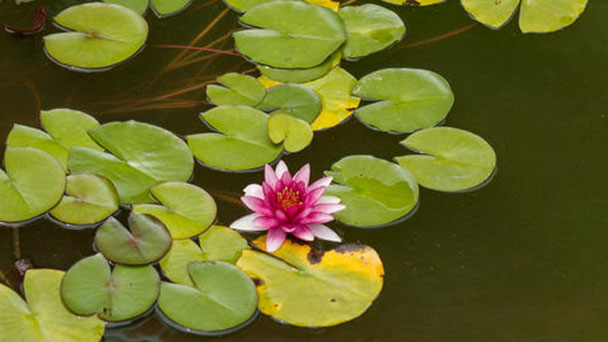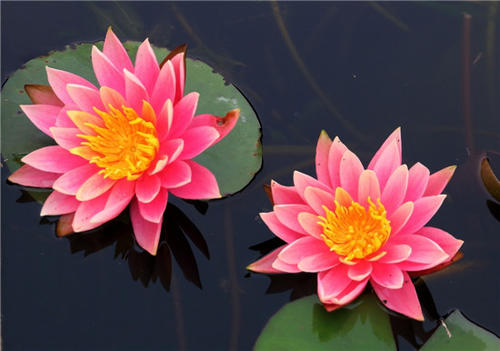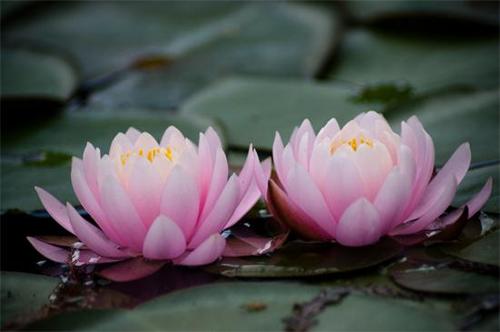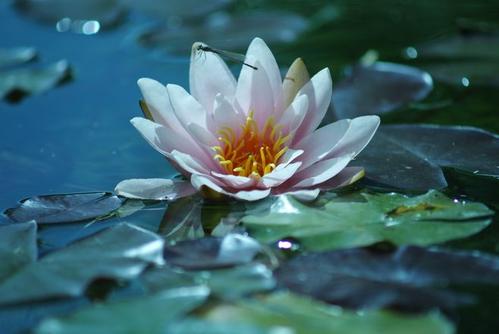Pygmy Water Lily (Nymphaea Tetragona) Profile
Written by Maggie
Nov 08 2021

Pygmy Water-Lily, scientific name Nymphaea tetragona, is distributed in Asia and North America, which grows in the pond, wetland and other places. It can be grown as ornamental plants, but also wine or edible medicine, the whole plant can make green manure.
Pygmy Water-Lily Picture
Characteristics of Pygmy Water-Lily
The leaves of pygmy water-lily (Nymphaea tetragona) are round or nearly round, and may be ovoid, while some species are pickle-shaped or arrow-shaped. Leaves entire, but corrugated in tropical Pygmy Water-Lily; The adaxials are green and shiny, and the abaxials purplish red. In some species, the pages have dark brown spots or mottled colors. Veins may or may not be obvious. On the other hand, a few varieties of tropical Pygmy Water-Lily grow small plants between the tip of the big cleavage and the stem of the petiole, which is commonly known as "viviparous".
The flower of Pygmy Water-Lily is composed of sepals, petals, pistil, style, carpel, stalk and other organs. Flowers are solitary, bisexual. Pygmy Water-Lily has 4-5 sepals, greenish or purplish red with black spots, lanceolate, narrowly ovate, or rectangular in shape. The buds are long peach shaped, peach shaped; Petals are usually ovulate, broadly ovate, oblong, orbicular, etc., petals more pointed, or slightly obtuse. The colors are red, pink, blue, purple, white and so on. Petals of Pygmy Water-Lily are single, multiple, double. The size, shape, and color of the petals therefore vary from species to species. From this constitutes the gorgeous state. Ovary superior to peripheral stamens enclosing above carpel before flowering and spreading sickle-like at maturity; Pygmy Water-Lily (Nymphaea tetragona) sepals, petals, and stamens appear in a spiral arrangement above the receptacle and ovary wall. The upper style is separated. The stigma is filiform, centered on the milky projections, and is funnel-shaped. At maturity, the stigma secretes glucose, confectionery, and amino acids to attract pollination by insects.
The fruit of Pygmy Water-Lily was disorderly shaped to hemispherical, mature in water and irregularly dehiscent. Seeds are small, elliptic or spherical;Most with aril.
Pygmy Water-Lily is a perennial floating leaf-shaped aquatic herb with a thick rhizome, which is treated or prostrate.
Pygmy Water-Lily Habit
Born in ponds, lakes, Pygmy Water-Lily loves sunshine, warm and moist, well-ventilated environment. Pygmy Water-Lily can withstand temperatures of -20℃ (it does not freeze in the underwater soil) and will not freeze to death. Pygmy Water-Lily is a daytime flowering type with petals expanding in the morning and closing in the afternoon. Pygmy Water-Lily is slightly shade-tolerant, shaded ponds near the shore that bloom but grow weakly. The soil quality is not strict, pH 6-8, all grow normally, but like the loam rich in organic matter. The depth of the pool in the growing season should not exceed 80cm, and some varieties can reach 150cm.
Distribution of Pygmy Water-Lily
Pygmy Water-Lily is widely distributed in China. They live in ponds, Russia, North Korea, Japan, India, Vietnam, the United States.

Pygmy Water-Lily Propagation
Propagate Pygmy Water-Lily from Division
Pygmy Water-Lily is mainly propagated by dividing plants. Hardy species are usually divided in 3-4 months before germination in early spring, while non-hardy species have high requirements for air temperature and water temperature, so they can not be divided until spring. When dividing the plants, dig out the rhizomes first, select the rhizomes with full new buds, cut them into 8-10cm long root segments, each segment with at least 1 bud, and then plant Pygmy Water-Lily. The top bud is buried in the topsoil upward. The depth of the topsoil is appropriate to the level of the plant bud eyes and the soil surface. Each pot is 5-7 sections. After planting Pygmy Water-Lily, bask in the sun a little, before injecting shallow water, to help maintain the water temperature, but the irrigation should not be too deep, otherwise it will affect the germination. Deepen the water level as temperatures rise and new shoots start. Place Pygmy Water-Lily in a well-ventilated and sunny place for conservation. The water depth of cultivation is 20-40cm. In summer, the water level can be deepened appropriately. In a small amount of pot planting, the Pygmy Water-Lily that has been planted for 2-5 years can be poured out of the pot, cut into 2-4 pieces, and then planted into the pot.
Propagate Pygmy Water-Lily from Seed
Pygmy Water-Lily can also be propagated by sowing, that is, after the flowers bloom, they are transferred into water. Before the fruits mature, the flowers are wrapped in gauze bags so that the seeds will fall into the bags after the fruits break up. After the seeds of Pygmy Water-Lily are harvested, they must still be stored in water. If they are stored dry, they will lose their germinating ability. The soil should not be overfilled and should be 5-6cm from the mouth of the basin. After sowing seeds, the soil should be covered 1cm, immersed in water by pressing, and the water surface should be 3-4cm higher than the soil in the basin. The soil in the basin should be covered with glass and placed in a warm place facing the sun to improve the temperature in the basin. Sowing temperature for Pygmy Water-Lily is in 25-30℃ is appropriate, after half a month or so of germination, the second year can be flowering.
Pygmy Water-Lily Viviparous Propagation
By Viviparous, we do not refer to embryos produced sexually, as in mammals, but to the reproductive form of Pygmy Water-Lily, the direct germination of a new larva from the mother plant. This phenomenon is a special way of reproduction in the plant kingdom, but it is common in Pygmy Water-Lily, which grows new larvae from leaves or flowers. However, not all Pygmy Water-Lily species can reproduce viviparous, such as Nymphaea tetragona in Hardy Pygmy Water-Lily (Hardy water lily) and Nymphaea capensis in tropical Pygmy Water-Lily (Tropecal water lily).
The new viviparous larvae of cold-tolerant Pygmy Water-Lily mostly grow from flowers, while the new viviparous larvae of tropical Pygmy Water-Lily mainly grow from leaves and young plantlets grow from the junction of leaves and petioles (hilum). In the young leaves of the mother leaves, hairs can be seen at the hilum, and with the growth and maturity of the leaves, the hilum grows from a little protruding to a complete plantlet. When the old leaves gradually withered, small plants rely on petiole and maternal contact for nutrition, after the petiole decay, the seedlings can leave the mother free drift. These young plants, produced early in their growth, will flower in the same year after being picked and planted.Because each leaf can grow into a new plant, its coefficient of reproduction is particularly high.
Pygmy Water-Lily Flower Meaning
Pygmy Water-Lily, like the Chinese lotus, is regarded as the embodiment of sanctity and beauty, and is often offered as an offering to the goddess. In the New Testament, too, there is the saying, "That which is holy shall rise out of the mire."

Pygmy Water-Lily Uses
Pygmy Water-Lily (Nymphaea tetragona) is praised as the "goddess in water" by people for its colorful flowers and lovely looks. Pygmy Water-Lily can be used for pond plantings and houseplants. Pygmy Water-Lily can also be combined with the needs of the landscape, the selection of beautiful appearance of the cylinder basin, placed in the construction, sculpture, rockery. The miniature variety of Pygmy Water-Lily (Nymphaea tetragona) can be planted in elegant small pots to decorate and beautify the living environment.
The rhizome of Pygmy Water-Lily contains starch and is used for food or wine making. Whole grass makes green manure.
Because Pygmy Water-Lily root can absorb mercury, lead, phenol and other toxic substances in the water, and also filter the microorganisms in the water, Pygmy Water-Lily is a rare plant material for water purification, which can be paid much attention to in the purification, greening and beautification construction of urban water.
Read More:
20+ Plants That Grow in Water
Latest Updated
- Benefits of Bugleweed - 7 Science-backed Health Benefits
- Bugleweed Dangers & Side Effects - Is It Poisonous?
- How to Plant Evergreen Trees - What You Should Know
- When to Plant Evergreens - Grow Guide for Evergreen Trees
- 12 Wonderful Evergreen Shrubs for Your Garden
- 12 Popular Evergreen Plants with Pictures for Beginners
- When And How To Prune A Lilac Bush Like a Pro
- How to Grow & Care for Lilac Vine (Hardenbergia Violacea)
- Japanese Lilac Tree (Syringa Reticulata) Care & Propagation Guide
- Shumard Oak Pros and Cons - What to Know
Popular Articles
- Winter maintenance of Antirrhinum Majus
- How to Grow Terminalia Mantaly Tree
- How to Grow and Care for Crossostephium Chinense
- How to grow Antirrhinum Majus in spring
- Peristeria Elata (Dove Orchid) Profile: Info & Care Guide
- Underwatered Snake Plant (Sansevieria Trifasciata) - Signs And How To Fix
- How to Care for Brazilian Jasmine Plant (Mandevilla Sanderi)
- How to Grow & Care for Graptopetalum Purple Delight in Summer
- Rosa Chinensis (China Rose): Plant Growing & Care Tips
- How to Care for Baby Sun Rose (Aptenia Cordifolia)
